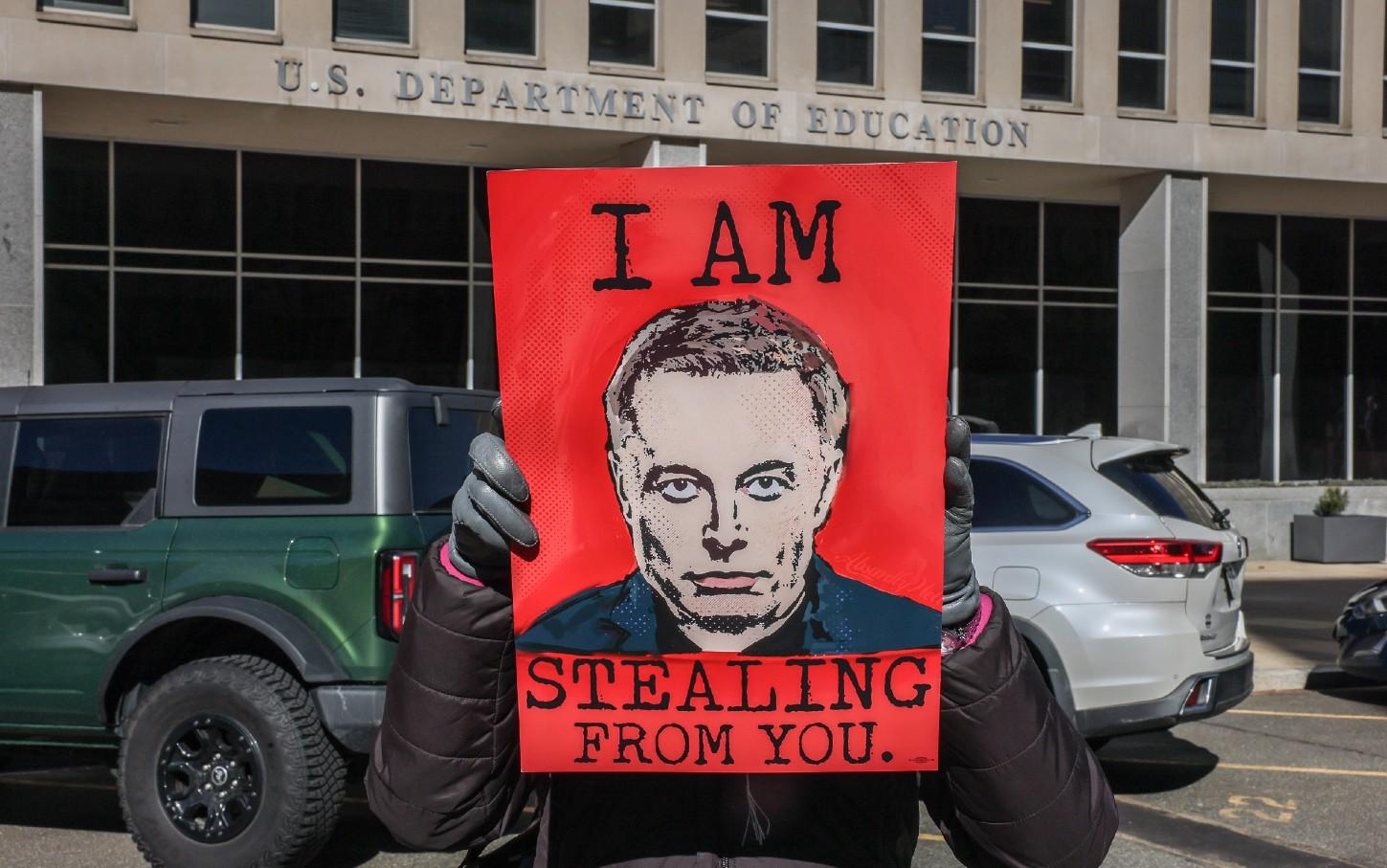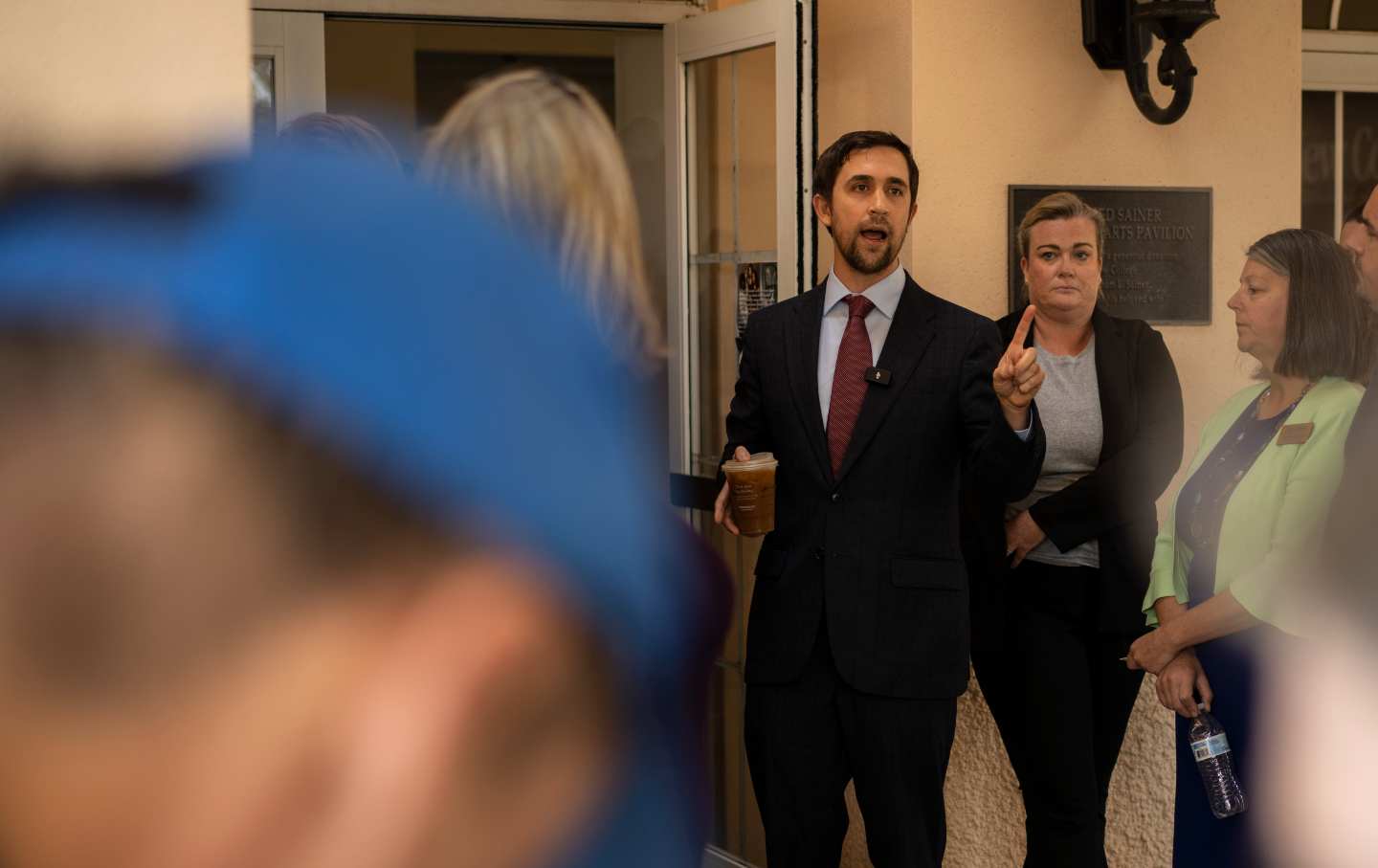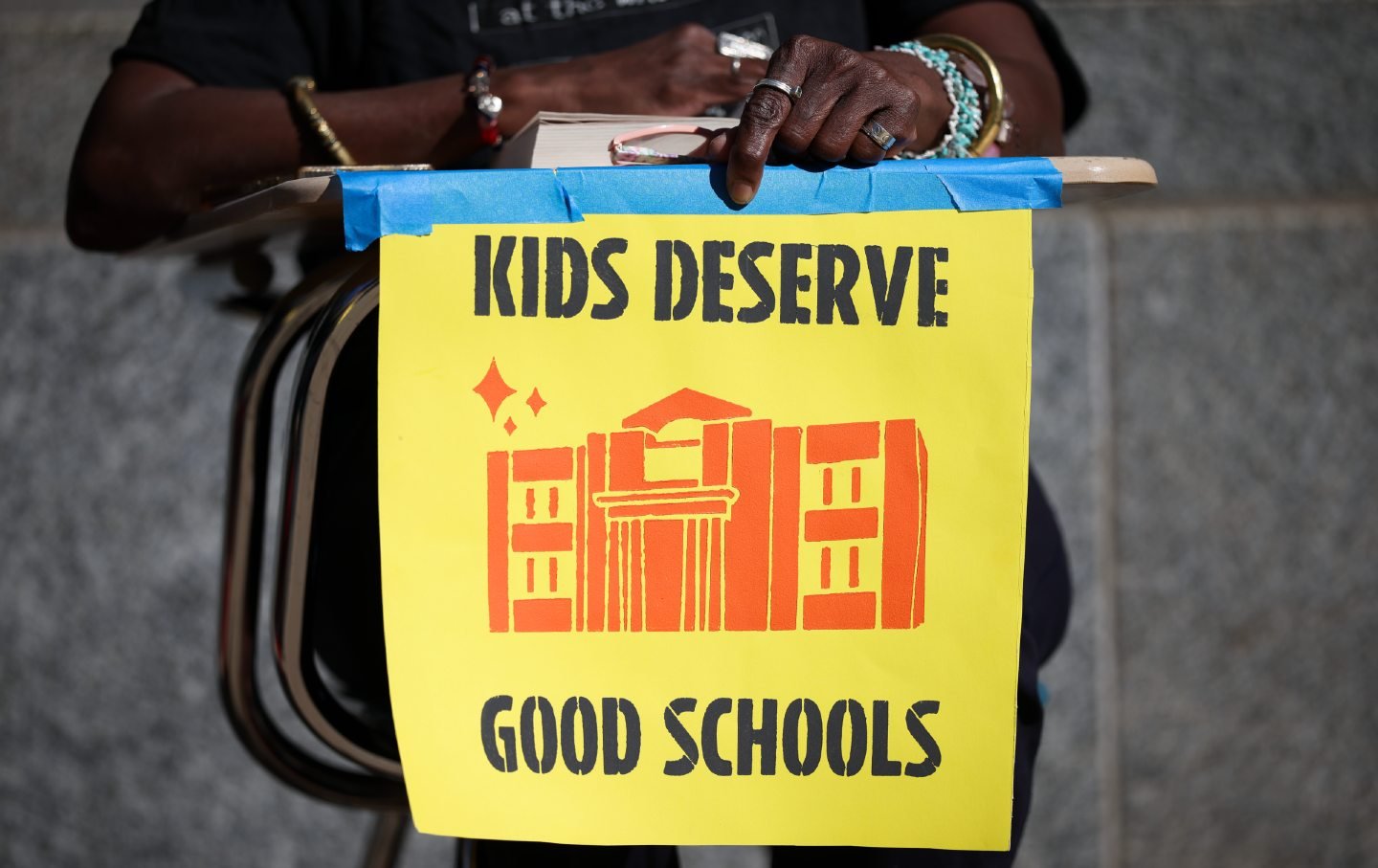May 29, 2025
The Trump administration’s funding cuts and attacks on public education are just the beginning.

Burn it down. That’s what appears to be the guiding strategy of the Trump administration—particularly when it comes to education. Cancel the grants and contracts. Fire the employees. Shred the mission statement. Close the department.
In the coming months and years, however, our understanding of the story is likely to change. When we look back at what happened after the administration cut to the bone, we’ll likely see that a different strategy was at play.
At the heart of the DOGE-MAGA alliance are two organizational philosophies. The first is Elon Musk’s puerile insight that trimming organizational “fat” can only be done by cutting away the “muscle” to which it is attached. Organizations, in other words, can be made stronger through drastic elective surgery. The second philosophy is Donald Trump’s view that CEOs rule from on high. Chief executives shouldn’t be hemmed in by rule-bound agencies and politically nonaligned civil servants.
Put these together, and what you get is a two-part strategy. First, empty the institutions. Then, build them back in a manner that ensures total loyalty to the man at the top.
In education, the public has focused principally on act one—the emptying of institutions—as if there were no second act to come. Largely, this is because Donald Trump vowed to close the US Department of Education, which he seems to be doing. It is important to recall, however, that this has been a Republican talking point for nearly half a century, beginning with Ronald Reagan’s 1980 presidential campaign. Closing the Department of Education has continued to play well with constituents; but it’s more of a symbolic target than it is a substantive policy aim. Yes, there have been massive layoffs. Yes, cuts to grants and contracts have been devastating. Yes, the work of the agency is being scattered to the winds. But that is not where the story ends.
In act two, the administration will begin building back its education program. And, as it restores the so-called muscle—whether or not that happens within something called the Department of Education—it will do so with the aim of purely partisan policymaking. This, ultimately, is what the public should be tracking, because this is the far more threatening gambit. Leveling the Department of Education would be one thing; weaponizing it is quite another.
Signs of what such a reconstituted education program will look like are already coming into view. Take, for example, “patriotic education”—a preoccupation of Trump’s, which gave rise to the 1776 Commission in the waning days of his first term. As signaled by the executive order banning “radical indoctrination in K-12 education,” the administration remains committed to exactly the sort of federal overreach that the president’s Republican enablers claim he will bring to a halt. “Children will be taught to love America. Children will be taught to be patriots,” declared White House policy adviser Stephen Miller at a recent press conference. “Children will be taught civic values for schools that want federal taxpayer funding.”
Trump-loyal state officials are already doing their part to enact the administration’s curricular ambitions. In Oklahoma, new social studies standards require high school students to “identify discrepancies in 2020 elections results,” including widely debunked claims about alleged voter fraud. After Oklahoma’s state Senate declined to vote on the controversial requirement, the new standards passed by default. Ryan Walters, the state’s top education official, took a victory lap celebrating what he described as the most “unapologetically conservative, pro-America social studies standards in the nation.”
We can also expect the Department of Education to pressure states, school districts, and schools to abandon the programs and policies Trump opposes. The department’s revamped civil rights division, for instance, recently launched an investigation of a Denver high school where students had lobbied successfully for the creation of a gender-neutral bathroom. Such politically motivated probes will become more commonplace in the months and years to come. In concert with compliant states, the administration will use its weaponized Department of Education to make unprecedented demands on what’s happening inside classrooms.
The administration will also use its education muscle to privatize K-12 education. Tucked into the budget reconciliation bill, the Educational Choice for Children Act, is a private-school voucher scheme that also functions as a tax shelter for the wealthy. By channeling public dollars to private schools, the program will immediately benefit the nation’s wealthiest families at taxpayers’ expense, and will likely increase participation in state-funded voucher programs. At the same time, it will make it possible for those contributing to voucher-granting organizations to enjoy an unprecedented 100 percent reimbursement while also avoiding capital gains taxes on gifts of corporate stock.
Finally, the White House will continue working to reshape America’s colleges and universities. Trump’s war on Harvard has dominated the headlines, but what’s more concerning is the administration’s plan to limit access to higher education. Americans have long seen schooling as the primary vehicle for making the country more equal. Yet Trump rejects that view entirely, seeing equality of opportunity not as a worthwhile aspiration but, rather, as a misguided effort to flatten out natural hierarchies. In the administration’s view, the nation sends too many kids to college who don’t belong there—an example of misguided social engineering. The White House budget, along with a complementary array of GOP higher education proposals, would make student loans more expensive and reduce student eligibility for Pell grants. And that’s likely just the start. In an interview with The Wall Street Journal last year, influential right-wing activist Christopher Rufo stated that his goal is to reduce the number of students who attend college by half.
There has been no small amount of hand-wringing about the downsizing of the federal government, particularly in the realm of education. In the past four months, we have witnessed a retreat from institutional responsibility, the degradation of organizational infrastructure, and sharp reductions in staff and budgets. But the real drama is only just beginning, and we should not mistake this intermission for the end of the production.
Having laid waste to both the animating vision for federal involvement in education and the structural capacity for realizing that vision, the Trump administration has begun to raise the curtain on act two. And though the second half of this tragedy isn’t yet written, the plot points are clear. Unless we intervene, it ends in catastrophe.
More from
Jack Schneider and Jennifer C. Berkshire

Maybe because its support for students is popular with Republicans as well as Democrats. And because cutting that funding would blow a big hole in the budgets of red states.
Jack Schneider

How the Claremont Institute is shaping the Sunshine State’s anti–civil rights and pro-patriarchy agenda
Jennifer C. Berkshire

An upset victory last week in a red state suggests that the Republican Party’s game plan for attacking public education may not be a winning strategy.
Jennifer C. Berkshire

Felecia Phillips Ollie DD (h.c.) is the inspiring leader and founder of The Equality Network LLC (TEN). With a background in coaching, travel, and a career in news, Felecia brings a unique perspective to promoting diversity and inclusion. Holding a Bachelor’s Degree in English/Communications, she is passionate about creating a more inclusive future. From graduating from Mississippi Valley State University to leading initiatives like the Washington State Department of Ecology’s Equal Employment Opportunity Program, Felecia is dedicated to making a positive impact. Join her journey on our blog as she shares insights and leads the charge for equity through The Equality Network.





